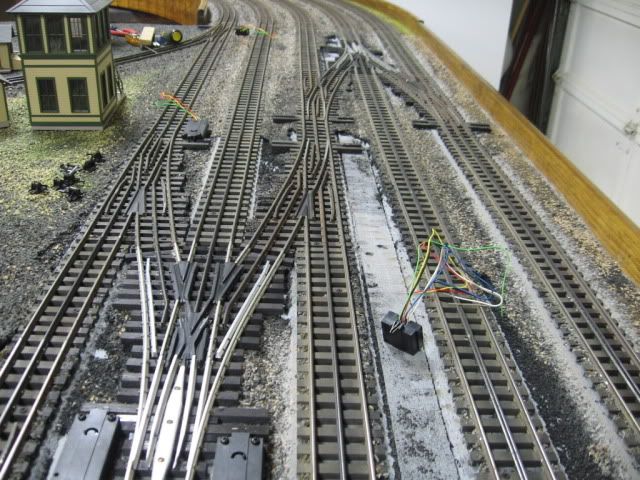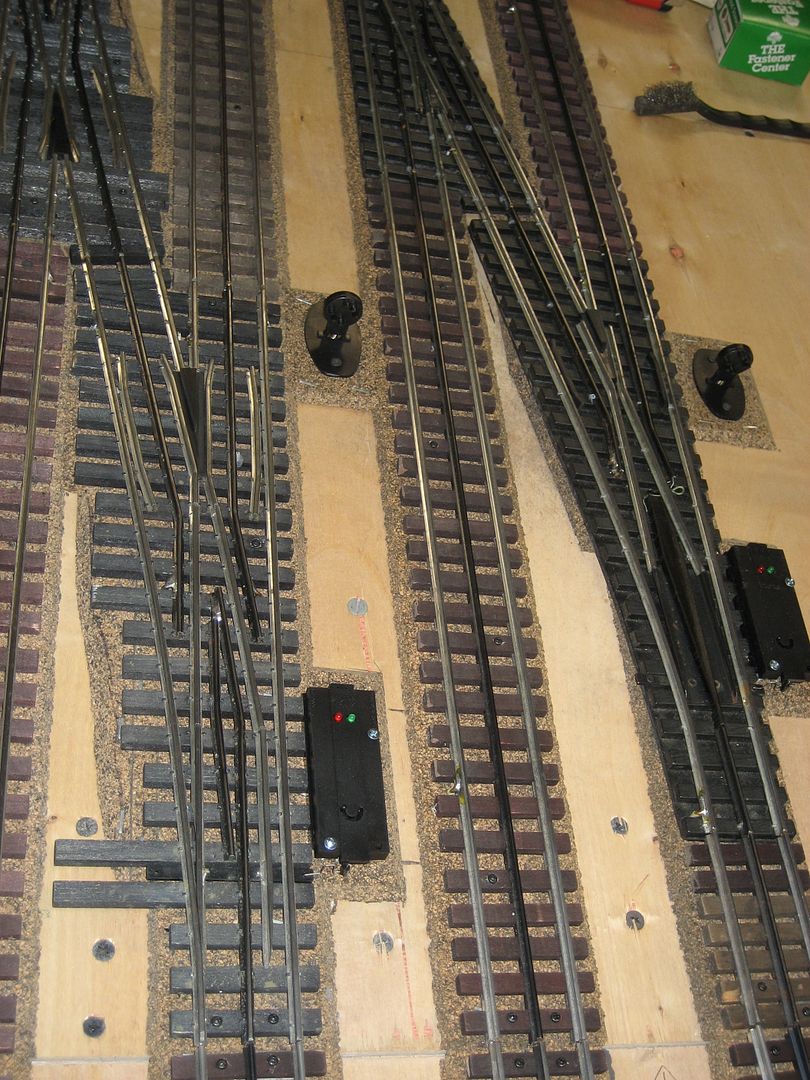Elliot,
Now that the identity of that lower left switch is known, it does appear to have an exaggerated anomaly as compared to current Ross offerings. It has nothing to do with your track laying, it's in the the construction of the turnout. Look again at the diverging rails...they have no curvature after passing the pivot point of the points. Ross's are a definite improvement on this, but still exhibit a sudden kink at the point tips, with most of the degrees in curvature confined to the area along the point rails. GarGraves spreads the degrees of curvature evenly along the diverging rails, to the frog and, depending on the turnout size, beyond. Numbered turnouts, like your #8's are so shallow that the anomaly is hardly visible.
I believe there's a reason Ross builds them as such. It aligns wheels into a straight path before they cross over the frog, preventing flanges from catching the angular join. Since tolerances in 3 rail wheel travel are not very exact, the guard rail can only do so much in preventing this.
Back on track, there are caveats about Gargraves too. You need to do additional electrical wiring to fully tie them into the layout. The diverging center rail will be dead without running a power wire to it. In the case of a crossover, wire both switch machines to fire simultaneously to prevent derailments.
Bruce




















